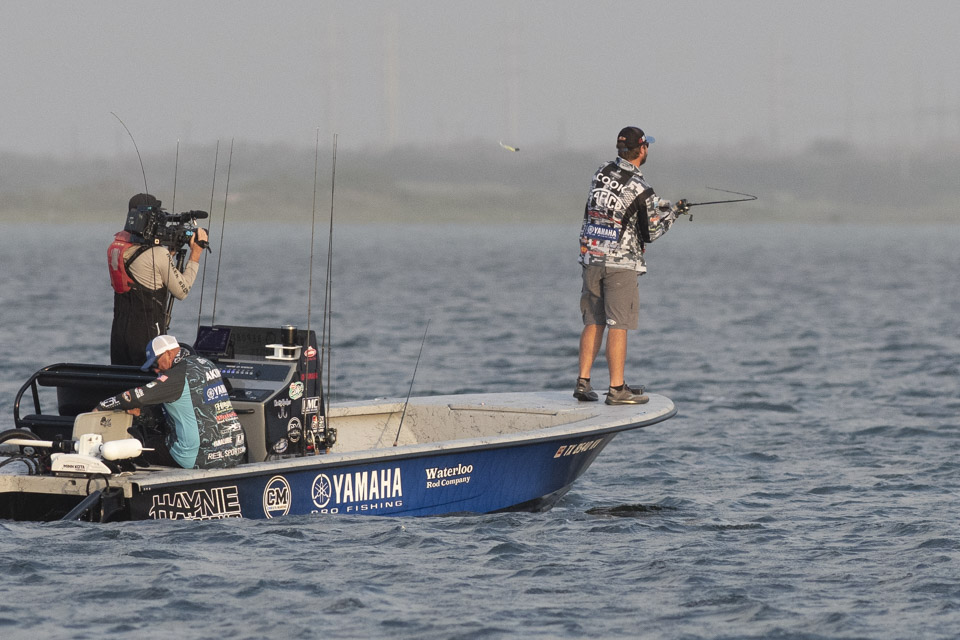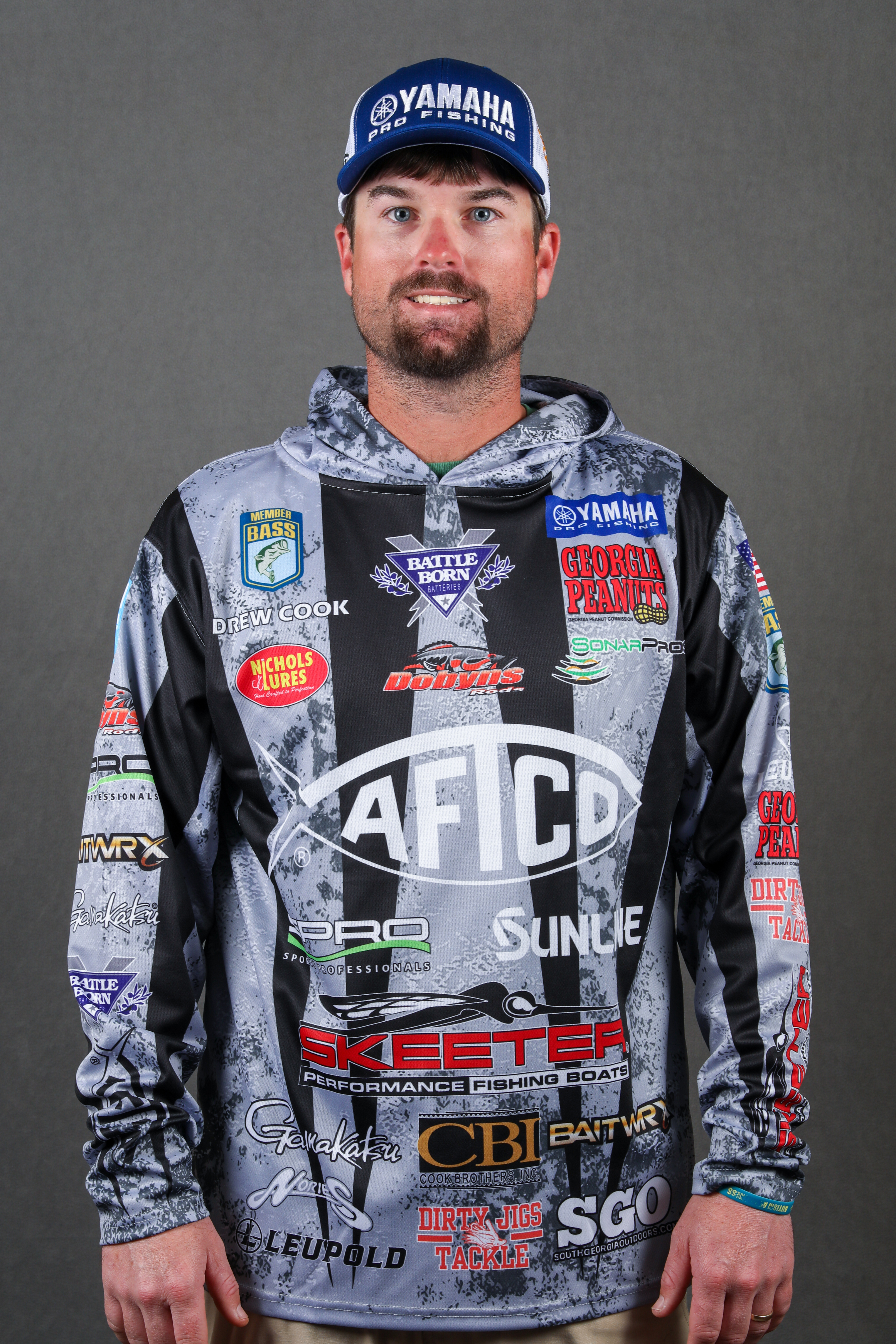
It’s summertime, and that means vacation time for a lot of families. The beach is always a popular destination for vacation, especially along the Gulf of Mexico. Folks from the Southeast and even up through the Midwest will pour down to the beaches of the Gulf Coast between now and September to enjoy some salt air, sun and seafood.
I grew up vacationing along Florida’s panhandle, and that’s where I still take my family to vacation these days. Fortunately, everyone in my family loves the Gulf Coast and the beach.
However, I know when it’s time to head to the beach for the annual family vacation, some family members would rather be bass fishing on a freshwater lake. It seems when it comes to fishing saltwater, people think there needs to be big boats, big rods and live bait to go fishing. And that’s simply not true. If you are a halfway decent bass angler, I promise you can pack just few items from your bass arsenal and have a blast fishing off the beach or wading the shallow flats of a bay while on a coastal vacation.
Saltwater fish are not near as smart as bass. If you can fool freshwater bass into biting, you already possess plenty of skill, tackle, lures and know how to catch saltwater fish.
As for rods and reels, all you need is a couple of spinning rods. Basically, any bass outfit you use for a shaky head, drop shot or wacky rig is perfect. Something in that 7-foot to 7-foot, 6-inch size in a medium action, or three power range, with a 2500 to 4000 size reel on it will work. Chances are your reels are already spooled up with the right line, too. A braided line in the 12- to 15-pound test will work fine. Grab some spools of fluorocarbon leader in the sizes of 12-, 15-, 17- and 20-pound test to match the cover you might be fishing.
A little advice on the rods and reels: I would not recommend bringing your “A Game” spinning reels. I’m talking more about those “second string” spinners you might have in the corner of the garage. As in, if it went missing or quit working, you wouldn’t be too upset.
Most reels can handle a few days of salt fishing with no problem, but if one gets a good dunking in the brine, it could be a little grindy in the months to come. As far as rods, the longer the better. Seven-footers will certainly work, but if you have something more in the 7- foot, 3-inch to 7-foot, 6-inch size it will give you a little more distance and bend in your beach game.
Now for the easy part: the lures. Here is a simple list of lures that work great in saltwater that you probably already own, starting with soft plastics.
Any kind of soft plastic straight-tail minnow or fluke style bait in a 3 1/2- to 5-inch size is perfect. Basic shad or pearl colors will work. Root beer, watermelon red flake and gold flake are all good, too.
Any boot-tail swimmers in that same size range are good choices too. Same kinds of colors for those as well.
Craw or beaver-style plastics, especially ones with pinchers or flappers that vibrate, giving the lure a kicking action are great for fishing in eelgrass flats in backwater bays. A color with some red, orange or blue in it to imitate small crabs will fit the bill.
Now here is the best part about these different plastics: You can rig all of them on a simple lead jig heads. Sizes ranging from 1/8- to 3/8-ounce are good for your straight-tail minnows and swimmers. You might need a 1/2-ounce for the flapping creature baits. Stay away from any light wire hooks though. Use jig heads that have a little beefier hook in about a 3/0 size.
Work these soft plastics just like you were fishing for bass. Hop the jig head minnows off sandy bottoms or swim them over grass. And swim the flapping baits like a swim jig or reel them along the bottom like a hard head.
Another deadly saltwater bait in the shallow grass is a ChatterBait with one of your soft plastics on it as a trailer. Yes, you can throw them on spinning rods; they’ll work just fine.
The old school silver or gold weedless spoon is an inshore staple as well. Go with a 1/4-ounce in super clear, shallow grass flats and the 1/2-ounce size in colored water out in deeper 4- to 5-feet grass. Just reel this lure steadily through the grass using a stop and go retrieve. The spoon is great for making super-long casts and covering a lot of water while wading backwater estuaries.
Another one of my saltwater favorites is a standard 1/2-ounce lipless rattler in chrome or gold. Sometimes fish school right up on the beach, and a trap is an automatic. If you see surface activity and a topwater is your jam, fling a spook-type walking bait or chugger out to them and see what happens. But just know, the paint job might not last long.
Finally, a pompano jig is a great beach fishing lure. Now, you may not have any of these in your bass tacklebox, but a tackle shop along a coast sells them. They’re cheap, simple fish catchers especially in the surf.
So, what can you catch just wading around at the beach?
Well on in the surf and sand on the beach side, you’ll find whiting, bluefish, lady fish, jacks, Spanish mackerel, pompano, flounder and the occasional redfish. On the bay side in the grass flats, you’re likely to run into these same species, but the chances of tangling with seatrout, redfish and possibly a snook are much greater.
No matter which side you fish, let your bass fishing instincts take over. On the beach side, look for any dark holes, deeper troughs and cuts in sandbars. Backwashes, or places where water flows from the bank back into the ocean are fishing goldmines. The giveaway in finding these is usually a deeper hole or cut through the sandbars that run parallel to the beach. Study the water flow and you’ll see water rushing back out into the ocean through these cuts. This is basically the beach version of an eddy. Fish wait at the end of these outflows to bring them forage being washed from the shallows back out in deeper waters.
You don’t have to heave super long casts out “past the second bar” when fishing beaches either. A lot of these troughs, holes and washes are right there in casting range around the first sandbar. Try casting parallel to the beach to work troughs instead of trying to cast across the ocean. The jig head minnow, pompano jig or lipless rattler hopped off the bottom are the best bests here.
Also, your chances of catching fish will increase on the beach if you can get near some kind of pass or inlet. A lot of state parks and national seashore areas are located at the mouths of inlets where bays meet the ocean and often feature piers or jetties. These mixes of water with these types of structures produce all species of fish year round.
If you’re going to wade a bay, try to go on a falling tide where you can walk with the falling water. Basic bass fishing principles apply here too. If it’s sparse, scattered grass, cast to the isolated clumps. If it’s a solid carpet of grass, cast to any irregularities in the grass: holes, bare spots, edges and anything that signals a depth change, no matter how slight. Read the current pouring off the flats to identify seams. A light jig head minnow, swimming plastic, ChatterBait, spoon or topwater are the best choices over the grass.
As I mentioned before, there is no need to take your best top-end bass gear the beach. Bass anglers usually have some old spinning combos lying around somewhere. And I’m betting you have a few tubs of old soft plastics and jig heads in the garage. The beach is great place for those off-brand baits that looked good when you bought them, but you never really jived with them for bass fishing. Saltwater fish are not heavily pressured bass at Lake Guntersville that require the best high-end, technical equipment to catch. They’ll basically wallop anything that’s an edible size and swimming through the water. And always remember to give your rods and reels a thorough rinsing after everyday of fishing.
So, the next time you vacation at the beach, throw some of your bass fishing gear in the truck and try casting some old lures around, especially in the mornings or evenings. You might be surprised what you catch.





